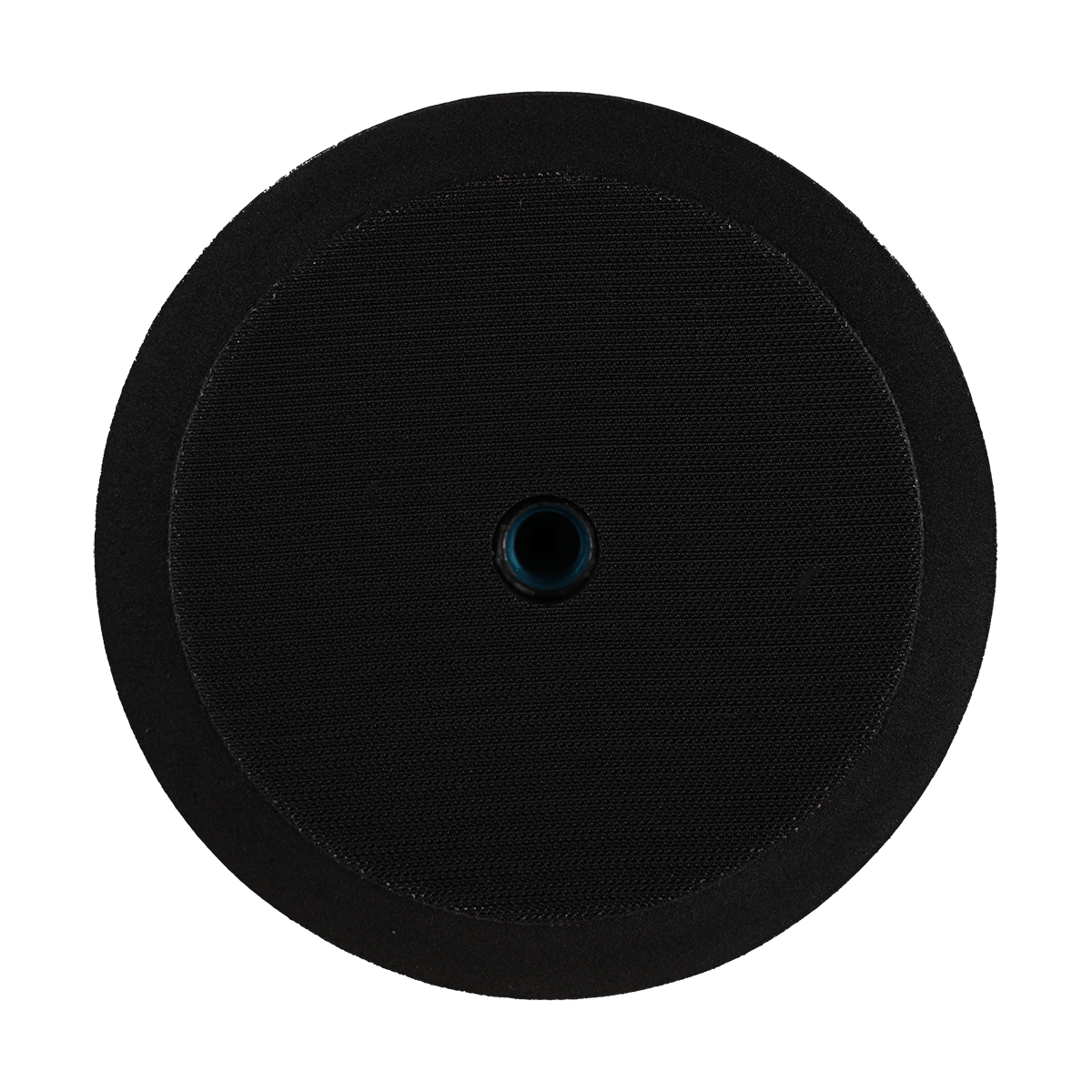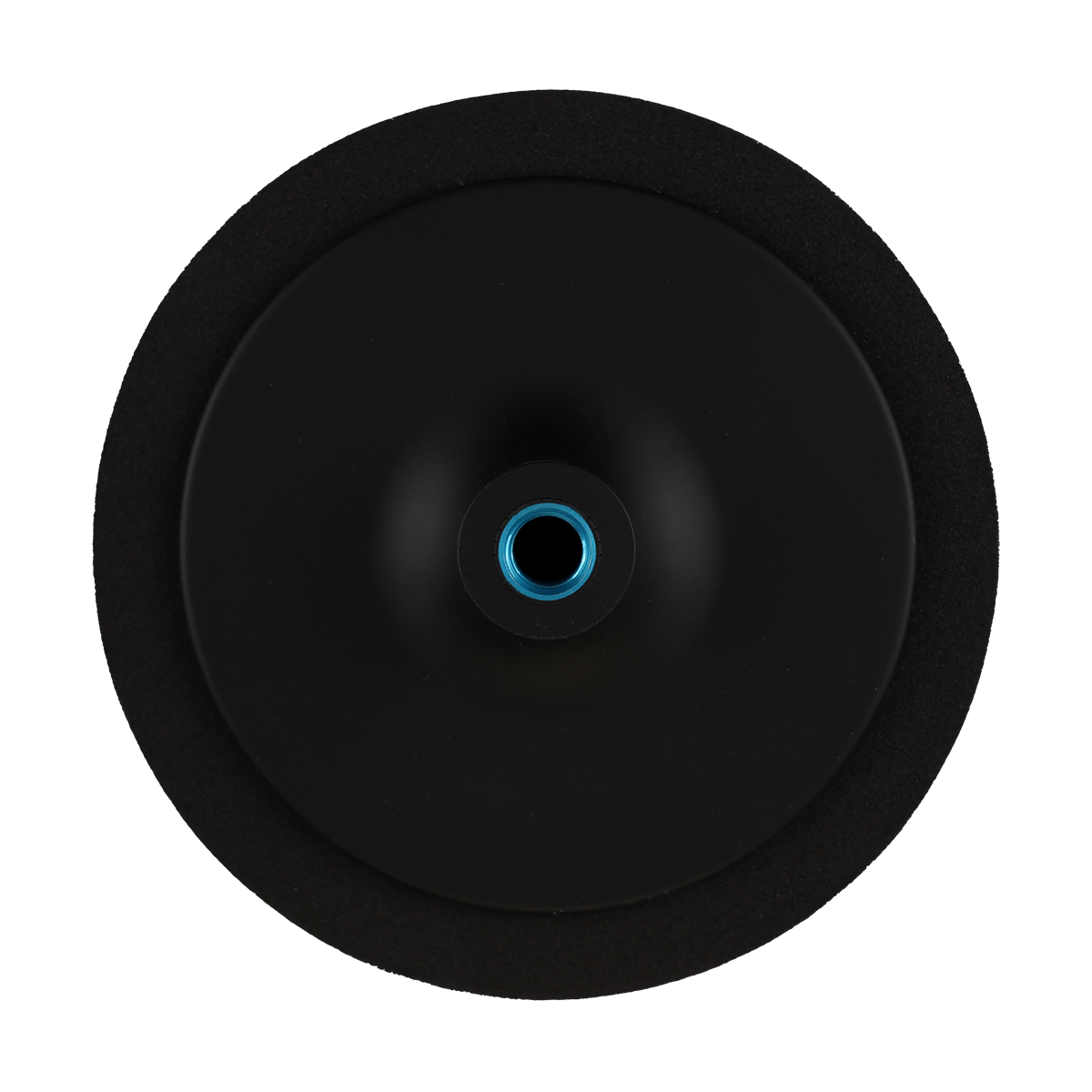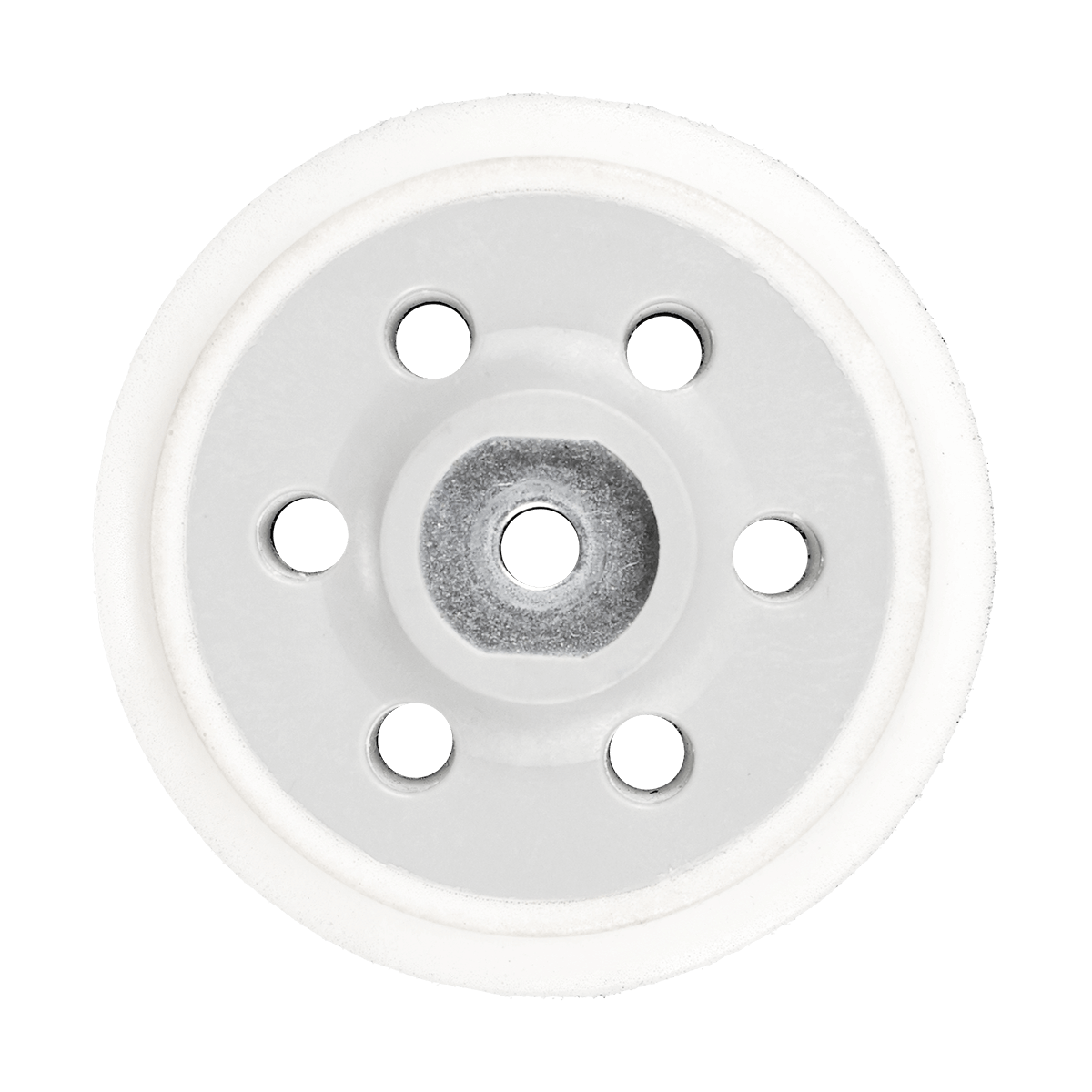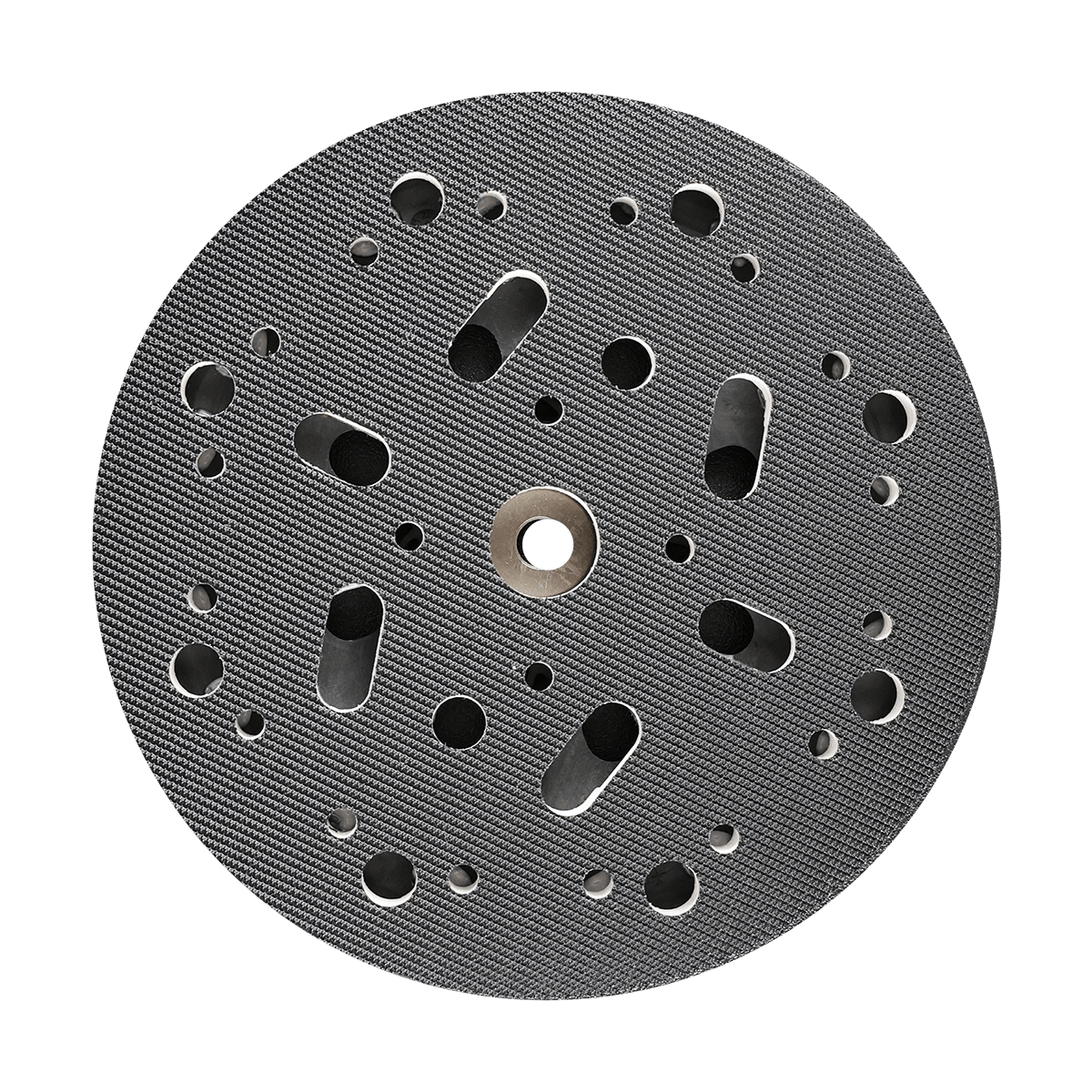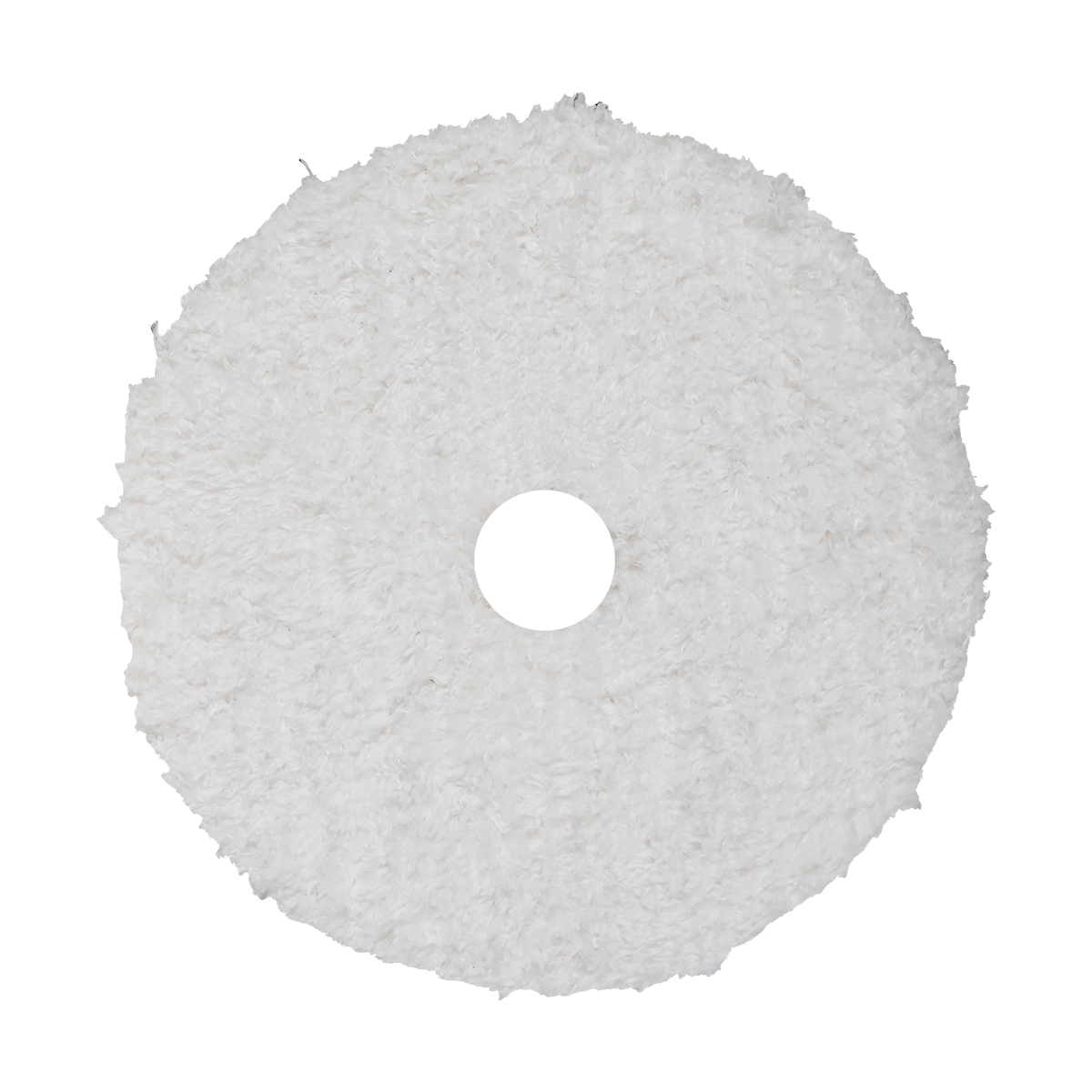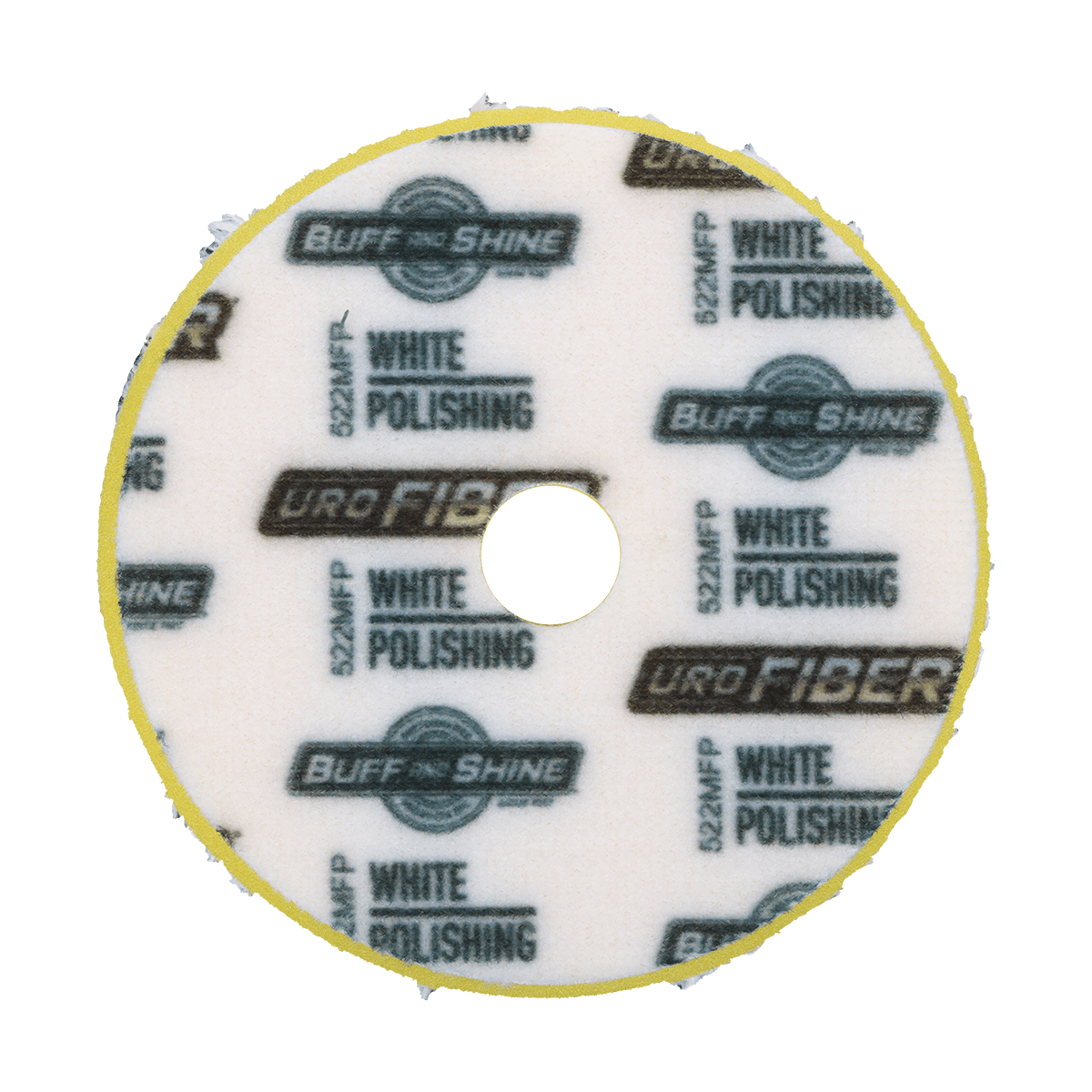Polishers
High-Speed/Rotary Polisher
The backing plate of a simple rotary polisher (often called a “high-speed polisher”) does just what the name implies—it simply spins round and round about a center point. If the machine is held in the same place for more than a few seconds, the spinning motion of the buffer pad against the paint surface of the vehicle causes friction and heat build-up. It is this heat and friction that gives the simple rotary machine its greatest advantages and at the same time its greatest potential for harmful results.
Rotary polishers have traditionally been called “high-speed” because in the old days (and, in some cases, even now), these machines were run at upwards of 3000 rpm. In contrast, most modern users of this technology run the machines at much lower speeds, perhaps between 600-1000 rpm. There is a great variance in preferences and opinions about speed, but the majority of detailing professionals using rotary polishers generally follow the rule “slower is better.”
We can utilize the friction created by the simple rotary machine at lower speeds to polish out imperfections and sub-surface damage in the paint. We can utilize the heat created by the same machine set at higher speeds to burnish the paint surface. “Burnishing” refers to the act of heating up the paint surface so that it can be “worked” into a high gloss.
At the same time that the simple rotary polisher good impact on the paint, it can, if used incorrectly, have bad impact on the paint. The most common problems include “burning” the paint, swirl marks, and excessive paint removal. Burning refers actually to the act of heating the paint so hot that it melts. The typical appearance of this is a “folding over” of the paint onto itself in small areas, kind of making the paint look like it was wiped while still wet. With incorrect use of a rotary polisher, paint can also be removed, most commonly from the edges and high contour points of a painted panel. This usually happens when the pad of the buffer is allowed to work over the contour or edge for too long or while heavy pressure is being applied to the machine. With the friction generated by the continuous spinning motion of the pad, it doesn’t take long for the paint to wear away.
Since the motion of a high-speed polisher is simple rotary, a number of things can go wrong during use, yielding swirl marks, which are concentric arcs or circles of micro-scratches left by the pad of a simple rotary polisher. Perhaps the pad or chemical being used is too aggressive, or even just the motion that the technician uses while moving the machine across the surface of the vehicle. The way to reduce swirl marks is to learn how to use the machine correctly and to learn how to combine pads and chemicals to yield a shiny paint surface with a minimum of swirls left behind.
The simple rotary polisher, when used correctly, is great for heavy paint defect removal in a relatively fast manner. Some technicians like to begin heavy paint correction projects with a simple rotary polisher and then continue fine polishing with random-orbit or dual-action polishers.
Random-Orbit Polishers
The head of a random orbital polisher moves in random ellipses about the center ring. The head essentially vibrates while slowly orbiting (not spinning) around the center. Machine drives only orbit and any overall pad rotation is simply a by-product of momentum. The action of a random-orbit polisher is similar to buzzing or vibrating over the surface, like moving your hand in a super-quick, tight back-and-forth motion or in very small, tight circles; and then moving your “vibrating” hand slowly around the surface in a large circle. In short, it’s like rubbing the surface.
The “surface rubbing” motion created by a random orbit polisher allows it to perform minor paint corrective activities. Since there is no consistent spinning action, the amount of heat and friction build-up is quite a bit less than that of a simple rotary polisher and the random orbital machine is incapable of leaving traditional swirl marks.
The plate on a random-orbital polisher DOES NOT spin freely. How do you tell the difference between a random-orbital and dual-head polisher? The head of a powered-off random-orbital will spin slowly and with a lot of resistance if you grab it and rotate it by hand.
So, the random orbital polisher is great for polishing to remove minor paint defects with no fear of paint damage or swirls. It’s also great for wax or sealant application.
Dual-Action Polishers
The head of a dual-action polisher, has, as the name implies, two simultaneous motions--it spins in a rotary motion AND oscillates (vibrates) about the center of the head. We learned that it is the pad spinning that creates heat and friction and the potential for problems if the rotary polisher is used incorrectly. But since the spinning head of a dual-action polisher is married to the secondary movement of oscillation, the potential for damage to the paint surface is greatly reduced. The spinning cannot create too much heat or friction because it is never concentrated in one place.
The motion of the head of a dual-action polisher is similar to moving your hand in large circles across the paint surface, kind of like the way people used to put on paste wax by hand.
As mentioned earlier, the common term in the industry for the simple rotary machine is “high-speed” polisher or buffer. The funny thing is that many dual-action machines run at revolutions per minute (rpm) that are actually higher than anyone would ever run on a simple rotary machine. Because of the oscillation component of the dual-action polisher’s motion, however, friction and heat can virtually never build up to the point of causing damage.
Another design fact that greatly reduces the risk of technical paint damage is the fact that the dual-action spinning can be stopped by pressure. You can demonstrate this yourself by placing a solid mark using a black marker at one point on the backing plate.
As you use the polisher across the paint surface, you will notice that the black mark spins at different rates depending on the amount of contact and pressure of the pad to the paint surface. If you press hard enough, the black mark WILL stop moving.
There is a wide range of dual-action polishers available, varying in head size and speed. There are even some with two heads, the advantage of which is the ability to work a much wider area at a time than a single-head model.
How do you tell the difference between a random-orbital and a dual-head polisher? The head of a powered-off dual-action polisher will spin freely with little or no resistance if you grab it and rotate it by hand. So, the dual-action polisher is great for polishing to remove minor paint defects with no fear of paint damage or swirls. It’s also great for wax or sealant application.
In recent years, there have been some new developments in dual-action polisher technology that have made them nearly as powerful as rotary polishers while still remaining relatively safe from the pitfalls of the rotary. The two main developments have been the Long-throw or High-action polisher and the gear-driven/forced rotation polisher.
Long-throw or High-action Dual-action Polishers
The main characteristic of a long-throw or high-action dual-action polisher is that the oscillation pattern of the head is much wider than that of a standard dual-action polisher. That is, the pad swings out much farther as it orbits around the center. The amount that the pad swings out from the center of the machine is called “throw”. The extended throw of a high-action polisher creates more friction and action against the paint surface.
This gives long-throw or high-action dual-action polishers the capability to perform more extensive paint correction than the standard dual-action machine, while still maintaining a relatively large margin of safety against paint damage or overheating. Many technicians find that they can perform most standard paint correction activities without the need for moving up to a rotary polisher. Other technicians will follow up extensive rotary polisher correction sessions with a high-action D-A to remove swirls and technical imperfections left by the rotary.
So, the long-throw or high-action dual-action polisher is great for light to moderate paint perfection activities (perhaps even more), and also great for wax/sealant application.
Forced Rotation Dual-Action Polishers
The main characteristic of a forced rotation dual-action polisher that makes it different from a standard dual-action polisher is that the forced rotation machine WILL NOT STOP SPINNING, no matter how much pressure you put on it. This creates a true combination of the power of rotary polishing and the safety of orbital motion. The continual spinning or rotating helps create heat and friction like a simple rotary polisher but the continual oscillation prevents that heat and friction from building up too much in one area.
These machines are sometimes called “gear-driven” because they are rotated not by a spindle but by a toothed gear that forces both orbit and rotation. This creates a very consistent (instead of random) pattern that yields more aggressive results. You simply cannot stop either motion with pressure. Now, because the forced rotation unit has more power, it IS possible to overheat paint with a forced rotation D-A, but it will take quite a bit longer than a rotary polisher.
So, the forced rotation dual-action polisher is great for heavy paint correction as well as final finishing. Some might argue that it is a bit “too much machine” for the simple act of wax/sealant application, but it is certainly possible to do so, making the forced rotation dual-action machine a great choice if you can only afford one polisher. Most detailing professionals will eventually have more than one type of polisher in their collection so as to be able to approach any job with a tool that has the best advantages for that job.

